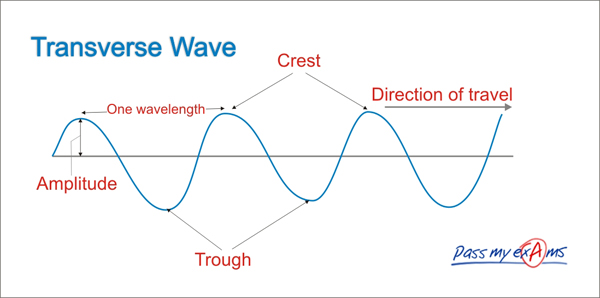What are waves?
Waves transfer energy from one point to another without transferring matter. They consist of disturbances which transfer the energy in the direction the wave travels without transferring matter.
There are two types of waves:
- Transverse waves
- Longitudinal waves
Transverse Waves
Transverse waves are wave in which the vibrations of the particles or medium in which the wave travels are at right angles to the direction in which the wave travels.
Water waves are an example of transverse waves. These can be observed in a ripple tank. The animation below shows transverse waves created in a ripple tank.
From the above animation it can be seen that the rubber duck only moves up and down whilst the energy of the wave moves along the tank. Thus the water only move up and down or in other words at right angles to the direction of travel of the wave. The energy however is passed along the water from one wave to the other.

The diagram above gives a side view of transverse water wave. Transverse waves consist of high parts or peaks called crests and low parts called troughs.
The distance between two successive crests or two successive troughs is the wavelength for a transverse wave.
The height of the crest from the undisturbed water position or the depth of the trough from the undisturbed water position is the amplitude of the wave.
